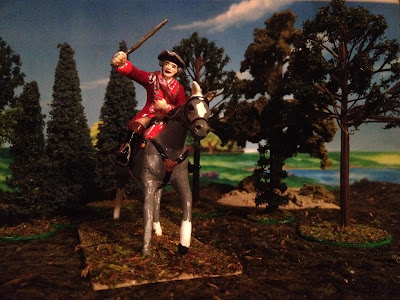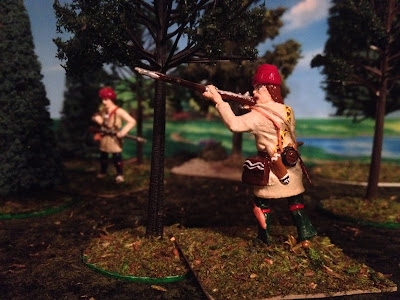One of my goals for the past year was to paint 25 figures. I succeeded, painting a total of 26 figures.
The first group showcased is the center company of the 80th Regiment of Foot (Royal Edinburgh Volunteers). They muster 11 men, including an officer and flagbearer.
Next is a group of six militiamen completed this year. The man waving his hat makes an excellently patriotic NCO, while the armed minister is ready to resist both Episcopalianism and George III.
The 2nd Pennsylvania Regiment received their own flagbearer in 2016.
I began a French & Indian War collection in 2016 by painting this French-Canadian militiaman. Comrades and opponents are not far behind...
In my opinion, no military diorama is complete without civilians, and these six personalities will add color and charm to any layout. A tavern keeper, gentleman, porter, and printer all fill needed roles in my 54mm colonial world.
Another fledgling collection of mine is the Seven Years War in India. It was bolstered with the recruitment of an EIC European and Sepoy.
Last but not least come these two enforcers from the American Revolution-era movie Beyond the Mask. In the movie, these black-coated gentry follow the orders of Charles Kemp and harass his opponents. I have given them the nickname "Kemp's Greys" based on their facing color.
And that was my progress in 2016! 2017 will see even more additions to my 54mm armies. Stay tuned!



























